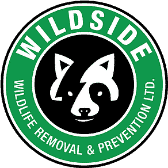Mice enter homes through very small holes, often through electrical wiring or plumbing holes, into crawl spaces and walls. They love dark, warm and quiet areas like storage rooms and attics; mice nest in these types of locations. Unfortunately, because they are nocturnal and quiet, and reproduce quickly, you may not notice them until they become very numerous, and you have an infestation.
A single female house mouse will have as many as 35 babies in a year.
Health Risks
Mice carry parasites and a range of diseases and health risks, contaminating food and air. They can cause salmonella poisoning, and spread hantavirus, rat-bite fever, Lyme disease, and other diseases. They will also aggravate asthma and allergies.

Signs Of A Mouse Infestation
You probably won’t notice the rodent activity at first, since the mice infestation usually starts in places like attic spaces. However, they will forage around the house for food, and you will eventually find evidence of them in food storage areas and other spots.
Mouse droppings are very small, looking like tiny dark pellets, making mouse faeces easy to miss until you have a lot of them. You are likely to start to notice the droppings near food sources. There is a distinctive odour to their urine, so an unpleasant smell is another sign.
You may see prints from tiny feet; their front feet leave four toe marks while the back feet leave five toe marks. You might also notice oily rub marks from their bodies that they leave as they move about.
Another common sign is chewed-up cardboard boxes and food containers and bags as they try to find a food source. They also chew to wear down their incisors and will gnaw through wood, plastic, and even electrical wires.
At night, you can hear scurrying, squeaking, and scratching from the walls or ceiling.
When a mouse nests, she will gather fibres from clothing, furniture, cushions, insulation, and more, so shredded paper and textiles are more indicators.
Rodent Infestation - Rats vs. Mice in Your Attic Space
It is important to make sure you know how to identify mice in your attic, as opposed to rats. Rat droppings are longer, about a half-inch long. Gnaw marks are larger, as well.
Rodent Control
Once you have identified a mouse infestation, you can start implementing some control methods to get rid of mice in your attic or other locations.
Prevent and Discourage
Look for and eliminate entry points, and seal them up. Trim nearby bushes and tree branches.
Deter mice by removing food sources, putting all foods in metal, tightly sealed containers or similarly secured containers, and removing water sources. It is critical to get rid of anything that will attract mice. This will also deter other pests, as a bonus.
Get Rid of Mice
There are a variety of methods and tools, including snap traps, glue traps, mouse bait, bait stations, and more. Using a snap trap, glue trap, or poison can be unsafe if you have a pet or children, so be sure they are not able to access them. Always follow the manufacturer’s directions when using these.
Place traps behind appliances, furniture and other such locations, in areas where you’ve found signs of mice or where they may be attracted. Check the traps regularly.

Removing Dead Mice and Cleaning the Attic
If you believe you have reduced your mouse invasion, start the cleanup process. Be sure to wear gloves to remove mice, and double bag them for disposal, and wash hands thoroughly afterwards.
Replace insulation as it is likely to have faeces in it, and vacuum well, being careful not to stir dust up, then replace the bag immediately.
Remove any contaminated items, and thoroughly wash containers outside, or dispose of them. Wash clothing, bedding and any other potentially contaminated materials or substances, or dispose of them if they can’t be cleaned.
Wash surfaces with bleach and water. A black light can help you find urine marks to clean.
A respirator is recommended when cleaning up after mice to avoid breathing airborne contaminants.
Professional Mouse Removal
Using a professional in the pest control industry is often best to get rid of mice. A professional is experienced in spotting and closing up any entry points. They know the best places to lay traps and can give you other tips to mouse proof your home. Also, they are familiar with the best safety practices and are trained to handle contaminated materials and dead mice.
Need Help With Pest Control?
If you are looking for a pest control company in the Burlington area that uses humane methods, while still being effective, Wildside Wildlife Removal and Prevention is your trustworthy choice.
We identify entry spots, assess your situation, and remove mice strategically and humanely. Next, we clean contaminated areas and materials professionally, so you can be confident that you and your family are safe from health concerns. To prevent a mice problem from happening again, we seal entry points and deodorize them to remove hormonal scents that attract pests.
We are proud of our reliable and effective results while providing cost-effective services that fit your budget.









